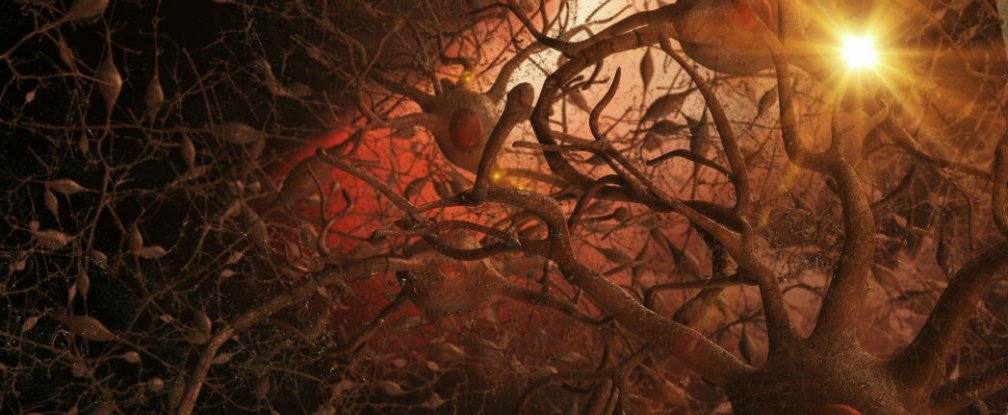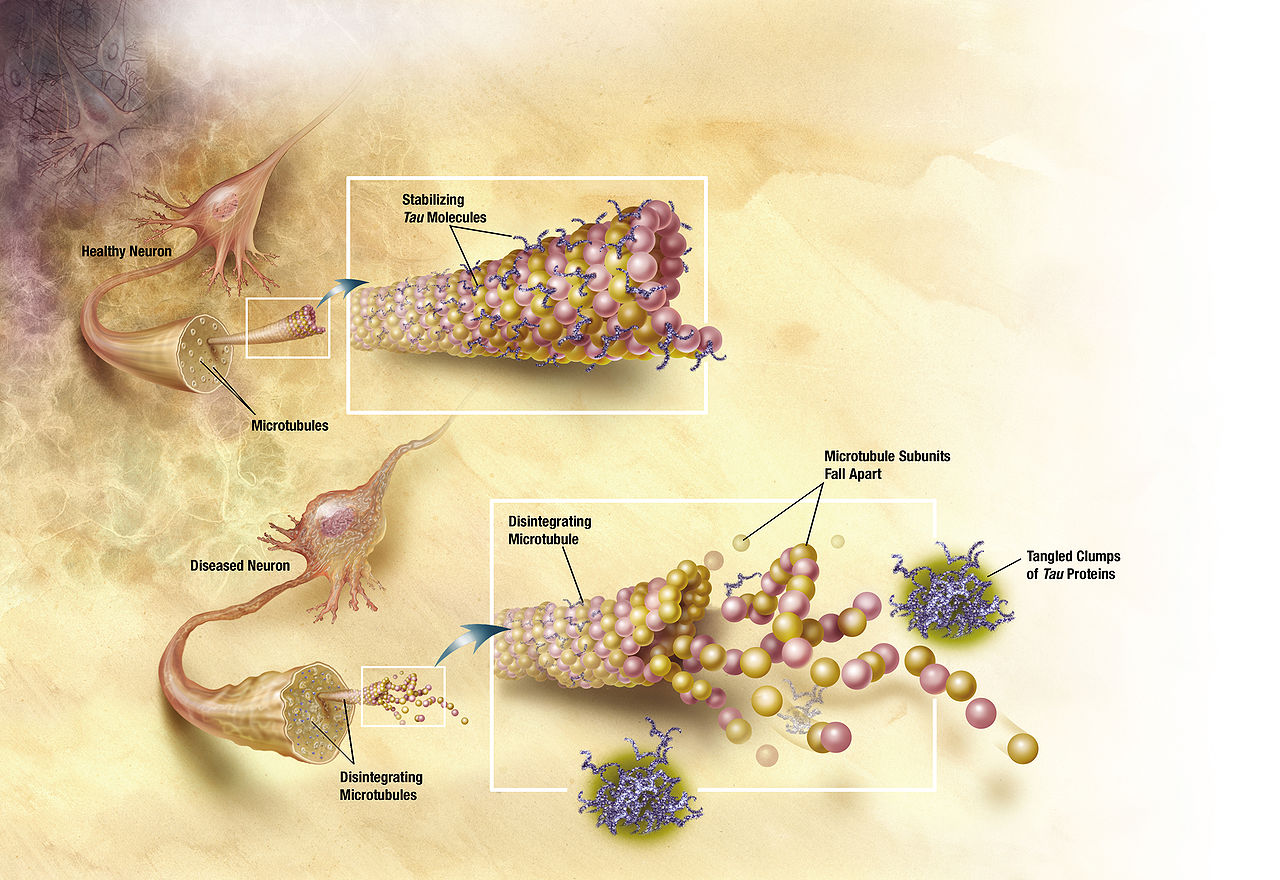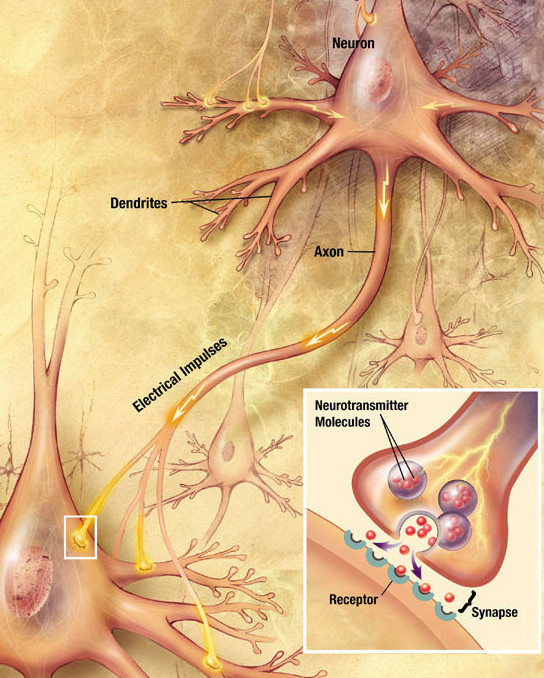It looks like you're using an Ad Blocker.
Please white-list or disable AboveTopSecret.com in your ad-blocking tool.
Thank you.
Some features of ATS will be disabled while you continue to use an ad-blocker.
share:
I found this interesting and refreshing.
At 75% cure rate on the mice that were treated, or 75% got their memories back.
I'm also hoping this type of technology isn't bought up, or somehow disappears due to big money and big pharma.
What's also great about this is that it will most likely lead to other types of resonant therapies.

www.sciencealert.com...
At 75% cure rate on the mice that were treated, or 75% got their memories back.
I'm also hoping this type of technology isn't bought up, or somehow disappears due to big money and big pharma.
What's also great about this is that it will most likely lead to other types of resonant therapies.
Australian researchers have come up with a non-invasive ultrasound technology that clears the brain of neurotoxic amyloid plaques - structures that are responsible for memory loss and a decline in cognitive function in Alzheimer’s patients. If a person has Alzheimer’s disease, it’s usually the result of a build-up of two types of lesions - amyloid plaques, and neurofibrillary tangles. Amyloid plaques sit between the neurons and end up as dense clusters of beta-amyloid molecules, a sticky type of protein that clumps together and forms plaques.

www.sciencealert.com...
edit on 20-3-2015 by Realtruth because: (no reason given)
a reply to: Realtruth
I think their headline was a little over dramatic.
From the source.
This is a very good development but far from a proven cure at this point.
I do wish them further success in their research.
I think their headline was a little over dramatic.
From the source.
Of the mice that received the treatment, 75 percent got their memories back.
This is a very good development but far from a proven cure at this point.
I do wish them further success in their research.
originally posted by: Realtruth
I found this interesting and refreshing.
I'm also hoping this type of technology isn't bought up, or somehow disappears due to big money and big pharma.
Australian researchers have come up with a non-invasive ultrasound technology that clears the brain of neurotoxic amyloid plaques - structures that are responsible for memory loss and a decline in cognitive function in Alzheimer’s patients. If a person has Alzheimer’s disease, it’s usually the result of a build-up of two types of lesions - amyloid plaques, and neurofibrillary tangles. Amyloid plaques sit between the neurons and end up as dense clusters of beta-amyloid molecules, a sticky type of protein that clumps together and forms plaques.
www.sciencealert.com...
A tooth brush for the Brain!
Brilliant !!!!
I hope to see this become the Cure !
Thanks for the post OP !
a reply to: Realtruth
I think this is awesome. It is allowing non - invasive brain cleaning.
Eventually we will start cleaning the pinieal gland...Age of Enlightenment is Upon Us.(Winter is Coming.lol)
Sound wave frequency, energy vibration control, this type of stuff is what cures cancer, and apparently Alzheimer.
Regards,
I think this is awesome. It is allowing non - invasive brain cleaning.
Eventually we will start cleaning the pinieal gland...Age of Enlightenment is Upon Us.(Winter is Coming.lol)
Sound wave frequency, energy vibration control, this type of stuff is what cures cancer, and apparently Alzheimer.
Regards,
a reply to: Realtruth
True the word "cure" is rarely used or justified in its technical sense. But if the plaque is removed, it is removed, not merely beaten back. More study will indicate whether they were overly optimistic or should have said the subjects were in remission etc. We cancer survivors tend to be a bit picky in how things are explained to us.
True the word "cure" is rarely used or justified in its technical sense. But if the plaque is removed, it is removed, not merely beaten back. More study will indicate whether they were overly optimistic or should have said the subjects were in remission etc. We cancer survivors tend to be a bit picky in how things are explained to us.
a reply to: ScientificRailgun
Good point.
I will be curious to see the study results of these mice a year or 2 out, not sure how long mice live.
I would also be a little concerned about possible side effects in humans. No telling what unintended effect this could have on the brain as a whole.
If the disease is not cured but the effects are eliminated for a time, maybe follow up treatments could keep it in check.
All just speculation at this point.
I do admire the research and wish them success in advancing it. Many questions left to be answered before this is considered 100% effective in humans as the headline suggests.
Good point.
I will be curious to see the study results of these mice a year or 2 out, not sure how long mice live.
I would also be a little concerned about possible side effects in humans. No telling what unintended effect this could have on the brain as a whole.
If the disease is not cured but the effects are eliminated for a time, maybe follow up treatments could keep it in check.
All just speculation at this point.
I do admire the research and wish them success in advancing it. Many questions left to be answered before this is considered 100% effective in humans as the headline suggests.
This is just me, but I tend to be skeptical when it's mice and not people. Also, remember the whole "saccharin causes cancer in mice!!!!
OMGWTFBBQ!" bit? You know, when meeses were given something to the tune of 500x a regular serving at a go? Yeah.
originally posted by: Aliensun
a reply to: Realtruth
We cancer survivors tend to be a bit picky in how things are explained to us.
That is the truth.
Lost mom to cancer last year after a long battle.
Our local cancer hospital, Roswell Park, ran TV adds saying, "cancer cant win".
We used to get so mad at that, saying bs, it is winning. They finally changed it to "we cant LET cancer win", after much negative feedback from the cancer community.
This is definitely an exciting possibility that needs to be fully studied and hopefully implemented.
However, in reading those articles, they have a severe and legitimate concern for the treatment as it passes through the blood/brain barrier. That is something that can cause a slew of other issues and be quite dangerous.
High potential to eliminate the millions that suffer from this though, including the families devoted to their care!
However, in reading those articles, they have a severe and legitimate concern for the treatment as it passes through the blood/brain barrier. That is something that can cause a slew of other issues and be quite dangerous.
High potential to eliminate the millions that suffer from this though, including the families devoted to their care!
From the standpoint of a family member watching a loved one live with this disease, I can honestly say that even if this worked for a week to restore
the memories and capabilities of the affected, then killed them, it would be an improvement.
My grandfather had this, and survived with it for 5 years. On those brief moments of clarity he would get where he recognized us and remembered who he was, he spent that time apologizing for not knowing us in the moments before. Seeing the pain in his eyes during those moments was horrible.
I sincerely hope there is positive momentum for the cure for this disease.
My grandfather had this, and survived with it for 5 years. On those brief moments of clarity he would get where he recognized us and remembered who he was, he spent that time apologizing for not knowing us in the moments before. Seeing the pain in his eyes during those moments was horrible.
I sincerely hope there is positive momentum for the cure for this disease.
I'll be curious if this treatment works for people who have lost memories for other reasons not due to Alzheimer's. For example, lost it due to
brain trauma. Mine was due to early childhood trauma. Although, I have often wondered if it's worth getting those memories back??? But you have
people who have had accidents, such as vehicle accidents and now have short term, or long term memory loss, I wonder if something like this could be
tailored to help them as well.

From my point of view based on my own understanding of Microtubule:
To remove the Neurofibrillary tangles (tangled clumps of tau protein) might solve an issue with the whole neuron dying. But the cell would need tau protein to rebuild/build new microtubules so that connection between different neurons is reconnected. The problem is not just the clumps but that tau protein are disconnecting from the microtubules but if you can achieve higher growth and repair than what breaks down then you have a treatment.
Stuart Hameroff Orch OR theory (quantum consciousness) have been working Ultra sound as therapy also.
www.quantumconsciousness.org...
Non-invasive brain stimulation techniques aimed at mental and neurological conditions include transcranial magnetic stimulation (TMS) for depression, and transcranial direct current (electrical) stimulation (tDCS), shown to improve memory. Transcranial ultrasound stimulation (TUS) has also shown promise.
Mood disorders, Alzheimer’s disease, traumatic brain injury (TBI) and post-traumatic stress disorders (PTSD) are enormous problems for those afflicted, their families, caregivers and society in general. Current treatments for these disorders are modestly effective at best, and new, more effective and inexpensive approaches are needed. A major hurdle in treatment is the lack of understanding in mainstream approaches as to how the brain works normally, how mood, cognition, memory and consciousness derive from synaptic computation among neurons. However evidence now suggests mental states may depend, to some extent at least, on vibrations, e.g. sound wave solitons in neuronal membranes, and megahertz (‘MHz’, 106 to 107 Hz) resonances in microtubule networks inside neurons. In TBI and Alzheimer’s disease, microtubules are disrupted and release ‘tau’, a microtubule-associated protein. Under normal circumstances, microtubules are directly responsible for neuronal and synaptic growth, repair and plasticity.
Cellular damage in TBI is attributed to biochemical cascades, apoptosis, inflammation, free radicals, glutamate excitotoxicity, blood brain barrier breakdown, axon shearing, and cytoskeletal disruption. Regardless, neuronal recovery and synaptic formation require microtubule-dependent extension of axonal and dendritic ‘neurites’. TUS may stimulate neuronal repair (e.g. for TBI) and memory turnover (PTSD). TUS warrants clinical trials for TBI, Alzheimer’s disease and PTSD.
edit on 20-3-2015 by LittleByLittle because: (no reason given)
a reply to: Anyafaj
My opinion:
If we assume that it is 2 parts not connected and both parts are healthy but just disconnected and you can stimulate neuronal repair so that the two parts are connected again via synapse then it should be possible.

My opinion:
If we assume that it is 2 parts not connected and both parts are healthy but just disconnected and you can stimulate neuronal repair so that the two parts are connected again via synapse then it should be possible.

edit on 20-3-2015 by LittleByLittle because: (no reason given)
originally posted by: LittleByLittle
From my point of view based on my own understanding of Microtubule:
To remove the Neurofibrillary tangles (tangled clumps of tau protein) might solve an issue with the whole neuron dying. But the cell would need tau protein to rebuild/build new microtubules so that connection between different neurons is reconnected. The problem is not just the clumps but that tau protein are disconnecting from the microtubules but if you can achieve higher growth and repair than what breaks down then you have a treatment.
Stuart Hameroff Orch OR theory (quantum consciousness) have been working Ultra sound as therapy also.
www.quantumconsciousness.org...
Non-invasive brain stimulation techniques aimed at mental and neurological conditions include transcranial magnetic stimulation (TMS) for depression, and transcranial direct current (electrical) stimulation (tDCS), shown to improve memory. Transcranial ultrasound stimulation (TUS) has also shown promise.
Mood disorders, Alzheimer’s disease, traumatic brain injury (TBI) and post-traumatic stress disorders (PTSD) are enormous problems for those afflicted, their families, caregivers and society in general. Current treatments for these disorders are modestly effective at best, and new, more effective and inexpensive approaches are needed. A major hurdle in treatment is the lack of understanding in mainstream approaches as to how the brain works normally, how mood, cognition, memory and consciousness derive from synaptic computation among neurons. However evidence now suggests mental states may depend, to some extent at least, on vibrations, e.g. sound wave solitons in neuronal membranes, and megahertz (‘MHz’, 106 to 107 Hz) resonances in microtubule networks inside neurons. In TBI and Alzheimer’s disease, microtubules are disrupted and release ‘tau’, a microtubule-associated protein. Under normal circumstances, microtubules are directly responsible for neuronal and synaptic growth, repair and plasticity.
Cellular damage in TBI is attributed to biochemical cascades, apoptosis, inflammation, free radicals, glutamate excitotoxicity, blood brain barrier breakdown, axon shearing, and cytoskeletal disruption. Regardless, neuronal recovery and synaptic formation require microtubule-dependent extension of axonal and dendritic ‘neurites’. TUS may stimulate neuronal repair (e.g. for TBI) and memory turnover (PTSD). TUS warrants clinical trials for TBI, Alzheimer’s disease and PTSD.
Thanks for sharing that. I have PTSD and I would guess some of my memory loss is because of that. I would debate taking a med to bring back those memories my brain made me forget. Do I want to remember something so horrific I forgot it, or should I leave well enough alone? Something I've always questioned for 38 years.
originally posted by: SirKonstantin
a reply to: Realtruth
I think this is awesome. It is allowing non - invasive brain cleaning.
Eventually we will start cleaning the pinieal gland...Age of Enlightenment is Upon Us.(Winter is Coming.lol)
Sound wave frequency, energy vibration control, this type of stuff is what cures cancer, and apparently Alzheimer.
Regards,
In some cases, vertex stimulation (targeting cingulate cortex) resulted in uncontrolled laughter, "out of body" experiences and feelings of being "more in the moment". High frequency (gamma synchrony) EEG was increased near the TUS stimulation site.
Achieving bliss state thru ultrasound. .
new topics
-
Australian PM says the quiet part out loud - "free speech is a threat to democratic dicourse"...?!
New World Order: 31 minutes ago -
Ireland VS Globalists
Social Issues and Civil Unrest: 1 hours ago -
Biden "Happy To Debate Trump"
Mainstream News: 1 hours ago -
RAAF airbase in Roswell, New Mexico is on fire
Aliens and UFOs: 1 hours ago -
What is the white pill?
Philosophy and Metaphysics: 3 hours ago -
Mike Pinder The Moody Blues R.I.P.
Music: 3 hours ago -
Putin, Russia and the Great Architects of the Universe
ATS Skunk Works: 7 hours ago -
A Warning to America: 25 Ways the US is Being Destroyed
New World Order: 11 hours ago
top topics
-
President BIDEN's FBI Raided Donald Trump's Florida Home for OBAMA-NORTH KOREA Documents.
Political Conspiracies: 17 hours ago, 35 flags -
A Warning to America: 25 Ways the US is Being Destroyed
New World Order: 11 hours ago, 20 flags -
Mike Pinder The Moody Blues R.I.P.
Music: 3 hours ago, 7 flags -
What is the white pill?
Philosophy and Metaphysics: 3 hours ago, 5 flags -
Biden "Happy To Debate Trump"
Mainstream News: 1 hours ago, 5 flags -
RAAF airbase in Roswell, New Mexico is on fire
Aliens and UFOs: 1 hours ago, 4 flags -
Australian PM says the quiet part out loud - "free speech is a threat to democratic dicourse"...?!
New World Order: 31 minutes ago, 4 flags -
Putin, Russia and the Great Architects of the Universe
ATS Skunk Works: 7 hours ago, 3 flags -
Ireland VS Globalists
Social Issues and Civil Unrest: 1 hours ago, 2 flags
active topics
-
President BIDEN's FBI Raided Donald Trump's Florida Home for OBAMA-NORTH KOREA Documents.
Political Conspiracies • 32 • : network dude -
Ireland VS Globalists
Social Issues and Civil Unrest • 5 • : AllisVibration -
Massachusetts Drag Queen Leads Young Kids in Free Palestine Chant
Social Issues and Civil Unrest • 20 • : Oldcarpy2 -
Australian PM says the quiet part out loud - "free speech is a threat to democratic dicourse"...?!
New World Order • 2 • : ColeYounger2 -
Biden "Happy To Debate Trump"
Mainstream News • 23 • : NormalBates69 -
Starburst galaxy M82 - Webb Vs Hubble
Space Exploration • 10 • : LSU2018 -
Supreme Court Oral Arguments 4.25.2024 - Are PRESIDENTS IMMUNE From Later Being Prosecuted.
Above Politics • 92 • : xuenchen -
Putin, Russia and the Great Architects of the Universe
ATS Skunk Works • 24 • : Oldcarpy2 -
Gaza Terrorists Attack US Humanitarian Pier During Construction
Middle East Issues • 81 • : KrustyKrab -
-@TH3WH17ERABB17- -Q- ---TIME TO SHOW THE WORLD--- -Part- --44--
Dissecting Disinformation • 694 • : Thoughtful3
